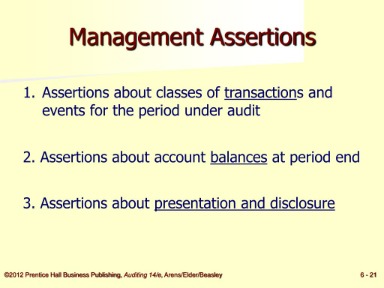
A journal is a complete record of all of the transactions a corporation carries out during its operations. The left side is called debit, and the right side is called credit under the “T” format. Because it provides real-time reporting of income and costs, it might make it easier for you to keep track of your spending.
Live updates: Idalia hammers Georgia with high winds, leaving thousands without power – Macon Telegraph
Live updates: Idalia hammers Georgia with high winds, leaving thousands without power.
Posted: Thu, 31 Aug 2023 00:17:11 GMT [source]
Sometimes, you’ll find that the general ledger displays additional columns for particulars such as a description of the transaction, serial number, and date. Transactions from general journals are posted in the general ledger accounts and then balances are calculated and transferred from the general ledger to a trial balance. You also use it to create the chart of accounts, or the list of all the accounts used in the organization’s general ledger.
Difference between journal and ledger:
The accounts which are to be debited and credited are determined by adhering to golden rules of accounting which are prescribed for journalizing. Each accounting entry must be supported by a narration which describes in brief the nature of the transaction recorded. In journal book, every transaction has two entries i.e. one debit entry and one credit entry, in the journal, both the aspects of the transaction is recorded. Every Jorecordedas date wise, This helps for quick and easy reference of any transaction. In the journal, every entry has a short narration which explains the nature of the transaction.
On the other hand, the General Ledger summarizes all journal entries by account type, such as assets, liabilities, equity, revenues, and expenses. This makes it easier to track changes and balances over time for each account. Once you have recorded a transaction in a general journal, the amounts are posted to the appropriate accounts, such as equipment, accounts receivable, and cash transactions. In ledger, business transactions are posted to various accounts from the journal. All accounting entries are sequentially recorded for the first time in the journal through accounting entries. A trial balance may also be compiled using the general ledger, as can the identification of anomalous transactions and the creation of financial statements.
What Is the Difference between a Journal and Ledger?
Balances from the general ledger are then used to prepare the trial balance, financial statements, and other reports. This flow of information ensures that the company’s financial records are accurate, complete, and up-to-date. In accounting, a journal is where we record detailed descriptions of all the financial what is depreciation how is it calculated transactions regarding a particular business. Simply put, a journal is the first place where we record all business transactions. We use these already recorded accounting journal entries to create the general ledger. A ledger is very important in generating the financial statements of a particular business.
- It is also called as a book of secondary entries because the transactions in the ledger are recorded after completion of the journal entries.
- Business organisations such as sole proprietors, firms and companies maintain books of accounts to record their business transactions.
- This allows accountants and bookkeepers to review each transaction carefully for accuracy and completeness before adding them to the accounting system.
- In other words, think of a journal as an individual account’s history, while a ledger is the summary of all accounts.
The debit and credit aspects of the transaction are recorded side by side, This reduces the possibility of errors because we can compare both credit and debit side are equal or not. Every business performs various operational activities and by this operational activities, there arise different types of transactions in the business. As per accounting standards and double entry system rules, different transactions have different treatment in the books of accounts. A ledger is the principal book of accounts, and its major function is to record and organize financial transactions that were previously recorded in a diary. The bookkeeper typically places the account title at the top of the “T” and records debit entries on the left side and credit entries on the right.
In this, the transactions are regularly recorded in an orderly manner, so that they can be referred in future. It highlights the two accounts which are affected by the occurrence of the transaction, one of which is debited and the other is credited with an equal amount. Because accounting also creates the trial balance, income statement, and balance sheet from looking at the ledger. The journal is often considered more important than the ledger because if it is done wrong, the ledger cannot be done correctly.
Which one is more important, journal or ledger?
Ledger is a principal book which comprises a set of accounts, where the transactions are transferred from the Journal. Once the transactions are entered in the journal, then they are classified and posted into separate accounts. The set of real, personal and nominal accounts where account wise description is recorded, it is known as Ledger. The Journal is a subsidiary day book, where monetary transactions are recorded for the first time, whenever they arise.
In this article, the discussion has been made about the difference between general and ledger. Ledger – An accounting ledger is a book in which similar accounts are grouped. It’s known as a book of final entry and comprehensive collection of T-accounts grouped together. Accounts within the general ledger are colloquially known as T-Accounts, because it forms like a letter “T” showing debits on the left side and credits on the right side. The difference between the total debits and total credits in a single account is the account’s balance.
More articles by this author
In the beginning, we talked about the procedure of recording a transaction. If any of the above steps is missing, then it would be hard to prepare the final accounts. The general journal is the first step in recording financial transactions. It’s also known as the “book of original entry.” Whenever a business transaction occurs, it’s recorded in chronological order in the general journal.
In accounting and bookkeeping, you must use both and cannot get away with using one or the other. The journal is the first step of the accounting cycle because all transactions are analyzed and recorded as journal entries. The ledger is an extension of the journal where journal entries are marked by the company and its general ledger account based on which of the financial statements the company has prepared. The general journal helps businesses keep track of their financial transactions before they’re posted to the ledger accounts. This allows accountants and bookkeepers to review each transaction carefully for accuracy and completeness before adding them to the accounting system.
This notion is called “ground zero” in the accounting discipline on occasion. A financial professional will offer guidance based on the information provided and offer a no-obligation call to better understand your situation. Ask a question about your financial situation providing as much detail as possible. Our mission is to empower readers with the most factual and reliable financial information possible to help them make informed decisions for their individual needs. This team of experts helps Finance Strategists maintain the highest level of accuracy and professionalism possible. At Finance Strategists, we partner with financial experts to ensure the accuracy of our financial content.
• Accuracy of journal cannot be tested, but accuracy of ledger can be tested to a certain extent using trial balance. • A transaction is firstly recorded in the journal soon after the occurrence of it; it is only then transferred to the ledger. • Data can be classified based on transaction in the ledger, while the basis of classification of data are accounts in the ledger. • In other words, ledger contains analytical records, while journal contains chronological records. • Journal is the book of prime (first) entry, while Ledger is the book of final entry.
Why is performance measurement important to the success of businesses?
If you want a detailed record of every transaction that occurs within your business, then using the General Journal is more appropriate. On the other hand, if you want an overview of your accounts and their balances, then use the General Ledger. If you need to make an adjusting entry or correct an error made in a previous period’s journal entry, then using the General Journal would be appropriate. However, if you want a quick snapshot of your current financial position or need to prepare financial statements regularly, then relying on the data from your General Ledger could save time.

Ledger facilitates in maintenance of the permanent record of all the transactions of the business. Understanding the manner in which business transactions are accounted for in the journal and ledger is essential as these are the primary books of accounts maintained and are an integral part of the accounting cycle. Once transactions are journalized and posted correctly, a trail balance can be prepared and true and fair financial statements can be drawn up. In a typical accounting cycle, transactions are first recorded in the general journal, then posted to the relevant accounts in the general ledger.
Balancing is not required in the journal, but it’s mandatory in the ledger. • Final accounts cannot directly be prepared from journal, but ledgers form the basis for easy preparation of final accounts. In ledger, accounts are prepared on the basis of transactions recorded in journal.
Journal and ledger are two main words that often one come across either when studying the concepts of financial accounting or preparing financial statements. In the double entry system of accounting, ledgers and journals are playing a vital and important role. Before the preparation of final accounts, all the transactions occurred must be passed through in both of these books. Back then, in a business, in addition to the general journal, accountants used to keep different journals such as sales and purchases journals and paycheck journals. However, today with the introduction of all-new accounting software, the most common practice is the maintenance of a general journal, where all the unique financial transactions and adjusting entries can be recorded.

